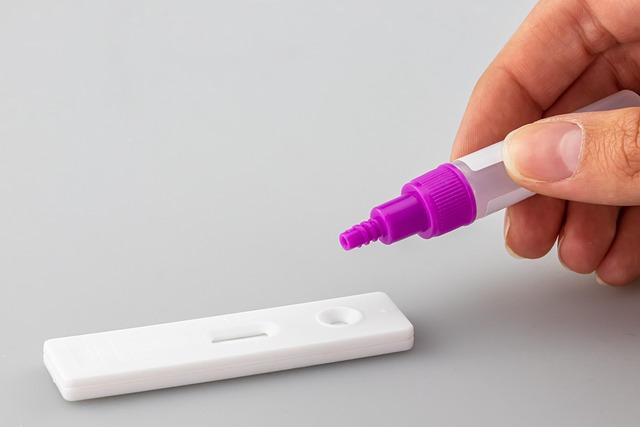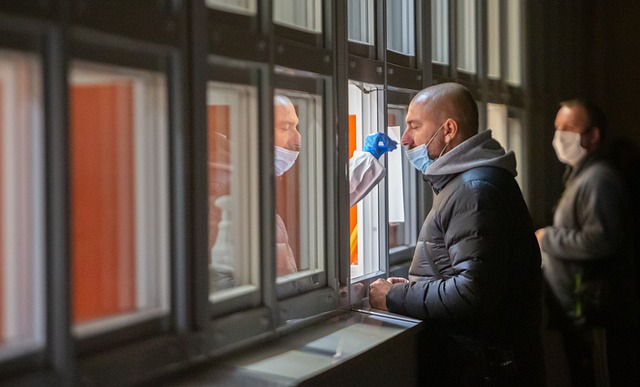In San Antonio, lead paint inspections are crucial for older homes built before 1978 due to the prevalence of lead-based paint. Professional inspectors use advanced tools like XRF analyzers or lab testing to detect lead. Safety protocols, including PPE and proper disposal, ensure minimal exposure risks during inspection and remediation processes, prioritizing public health protection, especially for children.
In San Antonio, lead paint inspection for older homes is a critical safety protocol due to the city’s vast housing stock. This article delves into essential lead safety hazard identification protocols, focusing on understanding the risks associated with lead paint in vintage properties. We outline comprehensive inspection protocols for identifying lead paint and provide best practices to ensure safe handling during the process. By adhering to these guidelines, professionals and homeowners can mitigate risks effectively.
- Understanding Lead Paint Hazards in Older Homes
- Inspection Protocols for Lead Paint Identification
- Safety Measures and Best Practices During the Inspection Process
Understanding Lead Paint Hazards in Older Homes

Lead paint, a common feature in older homes built before 1978, poses significant health risks. These properties often contain high levels of lead, which can be hazardous if disturbed during renovation or remodeling projects. In San Antonio, lead paint inspection is crucial for ensuring the safety of residents and workers alike. Professional inspectors use advanced tools to identify painted surfaces containing lead, helping property owners take necessary precautions.
Regular inspections are vital, especially in areas with a high concentration of older homes. By identifying lead paint early, homeowners can prevent its deterioration and minimize exposure risks. Proper containment and abatement methods should be employed when removing lead-based paint to mitigate environmental contamination and ensure the health and safety of all individuals involved.
Inspection Protocols for Lead Paint Identification

In San Antonio, lead paint inspection is a critical component of ensuring safe living environments, especially in older homes. The process begins with a thorough visual assessment, where professionals look for any signs of peeling, chipping, or blistering paint, which could indicate the presence of lead. This initial step is crucial as it helps to identify areas that require further testing. For suspect surfaces, a variety of methods can be employed, including X-ray fluorescence (XRF) analyzers and laboratory testing of paint samples.
Older homes are particularly prone to having lead paint, as it was commonly used in the past. The U.S. Environmental Protection Agency (EPA) recommends that any home built before 1978—the year lead-based paint was banned for residential use—be inspected for lead hazards. San Antonio residents and professionals should adhere to these guidelines when purchasing or renovating older properties, as proper identification and remediation of lead paint are essential to protecting public health, especially for children, who are most vulnerable to the toxic effects of lead exposure.
Safety Measures and Best Practices During the Inspection Process

During a lead paint inspection for older homes in San Antonio, safety measures and best practices are paramount to protect both the inspector and the client’s family. Inspectors should always wear appropriate personal protective equipment (PPE), including gloves, eye protection, and a respirator designed to filter out lead particles. Regular cleaning of tools and equipment between inspections is crucial to prevent cross-contamination. Moreover, ensuring proper ventilation in the inspected areas helps minimize the risk of lead dust accumulation.
Best practices include thoroughly examining all surfaces for signs of chipping, peeling, or blistered paint, especially in areas prone to wear and tear like windowsills, doors, and baseboards. All suspected lead-contaminated materials should be carefully documented and properly disposed of according to local regulations. Maintaining a meticulous record of inspection findings ensures that any necessary remediation can be addressed promptly, creating a safer living environment for families in San Antonio’s older housing stock.
Identifying lead paint hazards in older homes is a crucial step in ensuring the safety of residents, especially children. By implementing comprehensive lead paint inspection protocols, such as those discussed for San Antonio properties, professionals can effectively mitigate risks associated with this toxic substance. Adhering to strict safety measures during inspections and staying updated on best practices is essential to protect both inspectors and homeowners. Regular lead paint testing and proper disposal methods further contribute to a safer environment, ensuring that the legacy of lead in older homes doesn’t pose a lingering threat.
